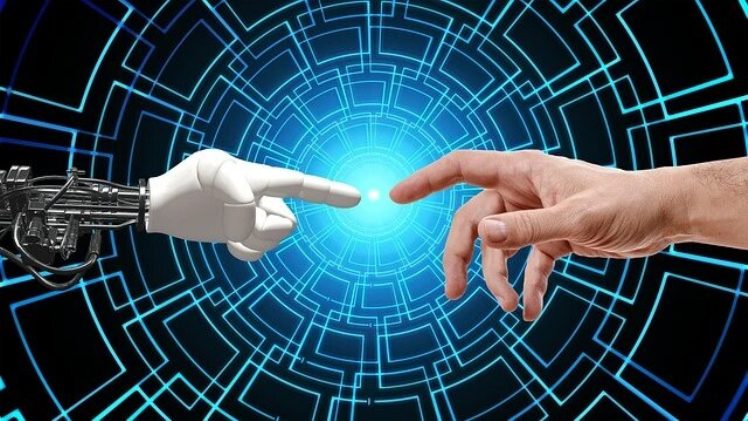A concise introduction
For over a century, artificial intelligence has captivated audiences through science fiction. AI allows machines to learn from experience, process new information, and execute tasks mimicking human abilities. By analyzing data, AI trains computers to identify patterns within datasets, enabling specific functions, a skillset often developed through top data certifications that equip professionals to work effectively in this evolving field.
Enrolling in specialized artificial intelligence programs and AI Courses in Hyderabad can advance your career. These programs provide advanced skills in AI, which is vital for modern industries. Develop expertise in machine learning algorithms, deep neural networks, and data analytics techniques. Mastering these tools allows for innovative solutions and efficiently enhances progress.
These courses can make you a sought-after professional in tech-driven sectors. Gain practical experience through hands-on projects and mentorship from industry leaders, fostering strategic insights. This comprehensive approach enhances your technical skills and cultivates problem-solving abilities and adaptability. Prepare to lead transformative AI initiatives and make significant contributions to the future of data science online course.
Evolution of artificial intelligence:
Early Concepts and Developments (1900-1950):
- 1900s: Increased media focus on artificial humans led to questions about creating artificial brains. Early robots, often steam-powered, could perform basic tasks like making facial expressions and walking.
- 1921: Czech playwright Karel Čapek introduced the term “robots” in his science fiction play “Rossum’s Universal Robots,” describing artificial people.
- 1929: Japanese professor Makoto Nishimura created Gakutensoku, the first Japanese robot.
- 1949: Computer scientist Edmund Callis Berkley published “Giant Brains, or Machines that Think,” comparing early computers to human brains ai for business leaders.
Birth of AI (1950-1956):
- 1950: Alan Turing published “Computer Machinery and Intelligence,” proposing the Imitation Game, now known as The Turing Test, to measure machine intelligence.
- 1952: Arthur Samuel developed the first self-learning checkers program.
- 1955: John McCarthy used “artificial intelligence” at a Dartmouth workshop, marking its entry into popular usage.
AI Maturation (1957-1979):
- 1958: John McCarthy developed LISP, the first AI programming language, which remains in use today.
- 1959: Arthur Samuel introduced the term “machine learning” during a lecture on improving chess-playing machines.
- 1961: Unimate, the first industrial robot, began operations at General Motors in New Jersey, handling dangerous tasks such as welding.
- 1965: Edward Feigenbaum and Joshua Lederberg created the first expert system, emulating human decision-making.
- 1966: Joseph Weizenbaum developed ELIZA, the first chatbot, which used natural language processing to engage with users.
- 1968: Soviet mathematician Alexey Ivakhnenko published work on the “Group Method of Data Handling,” a precursor to deep learning.
- 1973: James Lighthill’s report to the British Science Council highlighted the lack of progress in AI, resulting in reduced government funding.
- 1979: The Stanford Cart, an early autonomous vehicle created by James L. Adams, successfully navigated obstacles without human intervention.
- 1979: The American Association of Artificial Intelligence (now AAAI) was founded.
Artificial intelligence holds remarkable potential that surpasses our imagination. Beyond learning and problem-solving, future AI systems could reason complexly, generate original solutions, and interact meaningfully with the world. Imagine an AI doctor who not only diagnoses but also understands and responds to patient emotions, much like how Joyland ai chatbot character interacts meaningfully with users, creating more human-like digital experiences.
However, significant challenges remain. Ethical considerations surrounding advanced AI are a primary concern. Despite these obstacles, there is optimism for a future where AI and humans collaborate effectively, enhancing each other’s strengths.
AI’s development represents a scientific renaissance, evolving from an academic pursuit to a moral imperative. We must guide its progress responsibly to ensure that AI benefits society. The field advances with relentless momentum, driven by profound challenges and groundbreaking discoveries, positioning AI as a critical driver of global prosperity and enlightenment. Our task is to fully harness AI’s extraordinary capabilities.
Exploring artificial intelligence and its modern-day application
AI aims to replicate human cognitive functions, including learning, reasoning, problem-solving, perception, and language comprehension, through algorithms, data processing, and computational power.
Subfields of AI:
- Machine Learning (ML): ML creates algorithms that, without any explicit programming, can create patterns, recognition, and data-driven decision-making.
- Neural Networks: Mimic the human brain’s structure with interconnected layers of nodes. Deep learning, a subset of neural networks, powers applications like image recognition, natural language processing, and machine translation software to handle complex tasks more efficiently.
- Natural Language Processing (NLP): Facilitates machines’ understanding, interpretation, and generation of human language. Applications include chatbots, language translation, sentiment analysis, and voice recognition.
AI Applications:
- Healthcare: Enhances disease diagnosis via medical imaging and genomic data analysis.
- Finance: Improves fraud detection, algorithmic trading, and personalized financial services.
- Automotive: Technological advancements in autonomous vehicle technology, increasing safety and efficiency.
- Retail: Powers recommendation systems and optimizes supply chains.
Conclusion
AI’s societal impact is significant and rapidly advancing. Applications span autonomous vehicles, virtual assistants, medical diagnostics, and financial forecasting. Unlike traditional programs, AI systems enhance performance through iterative learning, distinguishing them from conventional computing. Ethical considerations, such as privacy, bias mitigation, and employment impacts, are increasingly crucial. Ongoing efforts aim to ensure transparent and ethical AI operations, maximizing benefits while managing associated risks.
Enrolling in a career-oriented AI Course in Hyderabad from a reputable institution provides a significant advantage in this dynamic field. This specialized curriculum offers advanced skills in machine learning, neural networks, and data analytics, crucial for navigating evolving industries. Participants gain practical insights through hands-on projects and mentorship, enhancing their technical proficiency and problem-solving abilities. Stay ahead in a competitive environment by leading AI-driven innovations and contributing to organizational growth.
